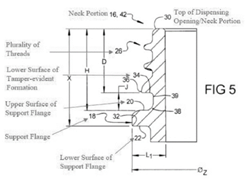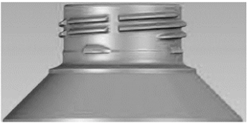In a mixed ruling on evidentiary exclusions and damages methodology, the US Court of Appeals for the Federal Circuit affirmed in part, reversed in part, vacated in part, and remanded a district court’s decision that excluded patent validity evidence and granted judgment as a matter of law (JMOL). The Federal Circuit found that the district court erred in blocking the defendant’s invalidity case and directed it to reassess the reliability of the damages expert’s testimony under Rule 702. Jiaxing Super Lighting Co., Ltd. v. CH Lighting Technology Co., Ltd., Case No. 23-1715 (Fed. Cir. July 28, 2025) (Dyk, Chen, Hughes, JJ.)
Jiaxing Super Lighting and its affiliate Obert (collectively, Super Lighting) sued CH Lighting over three patents related to LED tube lamps – two covering structural designs and one addressing electrical safety. CH Lighting admitted infringement but argued that the structural patents were invalid under the America Invents Act’s (AIA) on-sale bar. The district court excluded key evidence, found the remaining expert testimony insufficient, and granted JMOL in Super Lighting’s favor. A jury later found CH Lighting liable and awarded damages, which the district court doubled. CH Lighting’s motions for a new trial and renewed JMOL were denied. CH appealed.
CH Lighting contended that certain 2014 LED tubes met all claim limitations and triggered the on-sale bar. The Federal Circuit disagreed, affirming the district court’s finding that CH Lighting’s expert lacked a proper foundation, having offered no concrete evidence or personal knowledge of the alleged sales. However, the Court found error in the exclusion of two key evidentiary items: testimony authenticating sales documents and an internal presentation showing competitor products predating the patents. The district court excluded the documents for lack of authentication and barred the presentation because of its connection to a dropped inequitable conduct claim, later reasoning that the products shown differed in wattage. The Federal Circuit rejected both rationales, explaining that the relevant inquiry focused on whether the products disclosed patented features, not their wattage. The Federal Circuit deemed these exclusions an abuse of discretion, warranting a retrial on validity.
The Federal Circuit separately upheld the jury’s findings on a different patent where the jury found the patent not invalid for anticipation and infringed. CH Lighting had argued that a prior art reference anticipated the asserted claims and that the accused chips could not infringe if the reference did not. The Court found, based on the conflicting testimony of the parties’ expert witnesses, that the jury was free to credit one expert over the other and therefore had substantial evidence supporting the jury’s no invalidity verdict. Similarly, the parties’ experts presented conflicting evidence on infringement and that Jiaxing’s expert’s theory was not necessarily inconsistent with the validity ruling. The Court thus affirmed the findings of validity and infringement.
Turning to damages, the Federal Circuit emphasized that expert testimony must be based on reliable methodology and sufficient factual grounding, reinforcing standards articulated in the recent EcoFactor, Inc. v. Google en banc decision. Because the jury [...]
Continue Reading
read more


 Subscribe
Subscribe




